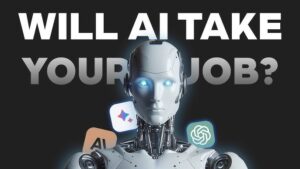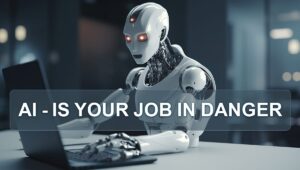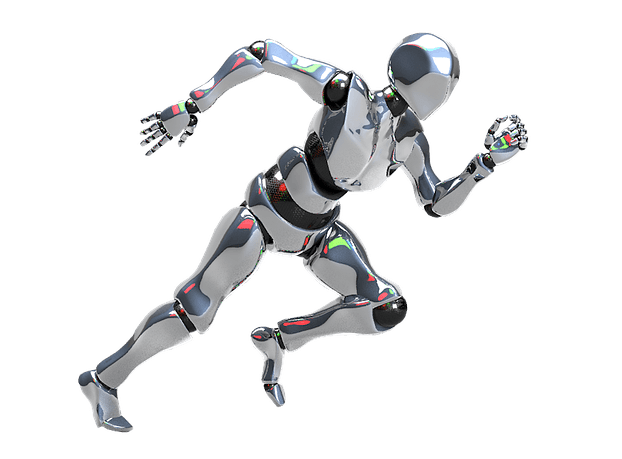Artificial intelligence (AI) is coming for your job, AI is going to replace you, in just a few years, you’ll all be out of work. Are you tired of hearing this?

Well, AI is the buzzword of the decade, but it’s also being pegged as the killer of all jobs. Well, here’s another such warning, and this time, it’s from someone who is building an AI future, Anthropic CEO, Dario Amodei. In a recent interview, he did not sugarcoat it, he said, “up to half of all entry-level white-collar jobs could disappear. AI could wipe out 50% of these jobs.
If that happens, unemployment could shoot up to 20%, which is a level not seen since the Great Depression. It’s a chilling prediction, and Amodei knows it. But he says, it’s time for governments and AI companies to stop pretending otherwise.”
Now, you might wonder, what is the point? What’s the point of studying for years, then climbing the corporate ladder, only to be replaced by a bot? I get it, it sounds bleak, it feels like the future is closing in, before we’ve even found our footing. But here’s the real question, how much of this is actually happening?
AI was supposed to take all our jobs.
How many has it taken until now? Tonight, we have some numbers. Globally, 14% of workers have been affected by AI. They were either displaced, or they changed their careers because of AI. Now, 14% is a very big number. It comes to around 375 million workers. All of them, of course, did not lose their jobs. But how many did?

There is no combined estimate yet, but it could be somewhere between 4 to 5 million jobs. In the United States, 1.9 million jobs were lost directly due to AI adoption. In China, 1.2 million jobs were lost in logistics and basic manufacturing. In India, 650,000 IT service jobs were lost, and so on in many countries, and all of these add up to around 5 million jobs in all.
Now let’s look at the worst affected sectors.
- Customer service and call center. They were the first in the line of fire, and the reason is automation. Using AI-powered chatbots and virtual assistants, globally around 1.2 million jobs were lost in this sector thanks to AI.
- IT services and tech support. Again, AI now handles basic troubleshooting, software testing, and back-end tasks. So estimated jobs lost are around 850,000.
- warehousing and logistics. AI-driven robots work in factories. Sorting, packing, and inventory management is automated, so globally 1.1 million jobs have been cut.
- Administrative and clerical jobs, AI tools are now doing the heavy lifting here. They are handling scheduling, data entry, invoice processing, and reporting. So you no longer need humans for this kind of stuff. About 750,000 jobs were lost in this sector.
- Banking and financial sector AI is replacing analysts, compliance officers, and back-office staff. Around 400,000 jobs have been cut.
- Retail and e-commerce, AI health and inventory management, cashier-led stores, and customer analytics. So 300,000 jobs, 3 lakh jobs have been cut in this sector.
And here’s another twist. Women’s jobs are more at risk. According to a United Nations study, 41% of women’s jobs are exposed to AI, but for men it’s only 28%. Do you know why?
Because many female-dominated fields are easier to automate, like administrative support or customer service. So it doesn’t matter if you’re ready or not, artificial intelligence is replacing people. Sometimes it’s also backfiring.
For example, at Klarna, it is a buy-now-pay-later company.
Then there is IBM. In 2023, it was predicted to replace 8,000 jobs with AI. So far, IBM has managed only a few hundred. In fact, AI has created newer jobs. So there is some hope there, but mostly the numbers paint a bleak picture. By 2026, 75 million jobs could be displaced by AI.
Simultaneously, 133 million jobs may be created, but they will require entirely different skills. And who gets those new jobs?
If history is any guide, it’s the people who are already ahead. The more educated, the more connected. Those at the losing end are often the working class. So I guess the question is not whether AI is coming for your job. The question is whether the people building AI care enough to stop the blow. This is not a sometime-in-the-future story, it is happening now.
So the time for polite optimism has passed, the machines are here, the pink slips are being handed out. We will have to act fast to retrain, to regulate, and to re-imagine work. And if we don’t, the future won’t be artificially intelligent, it will just be artificially human.
